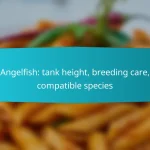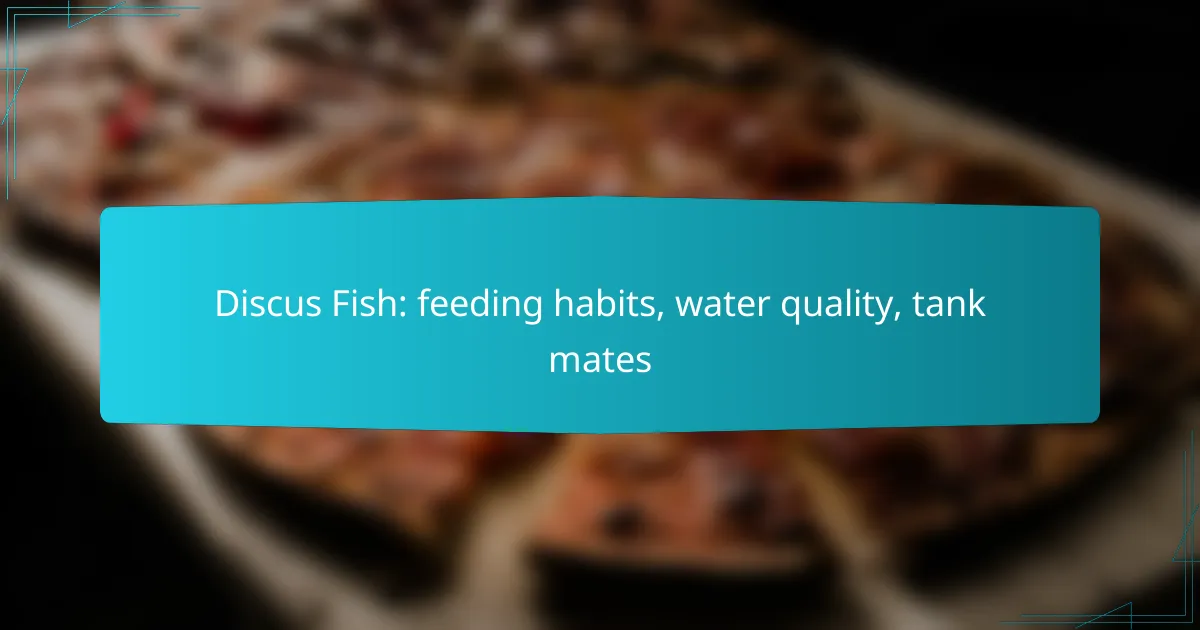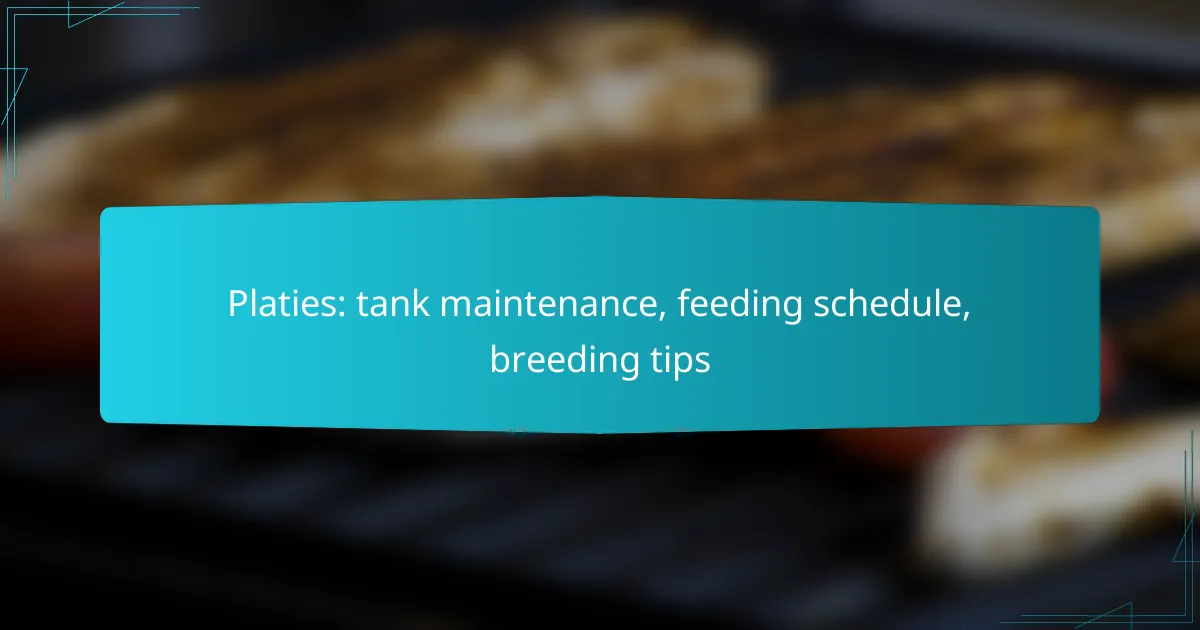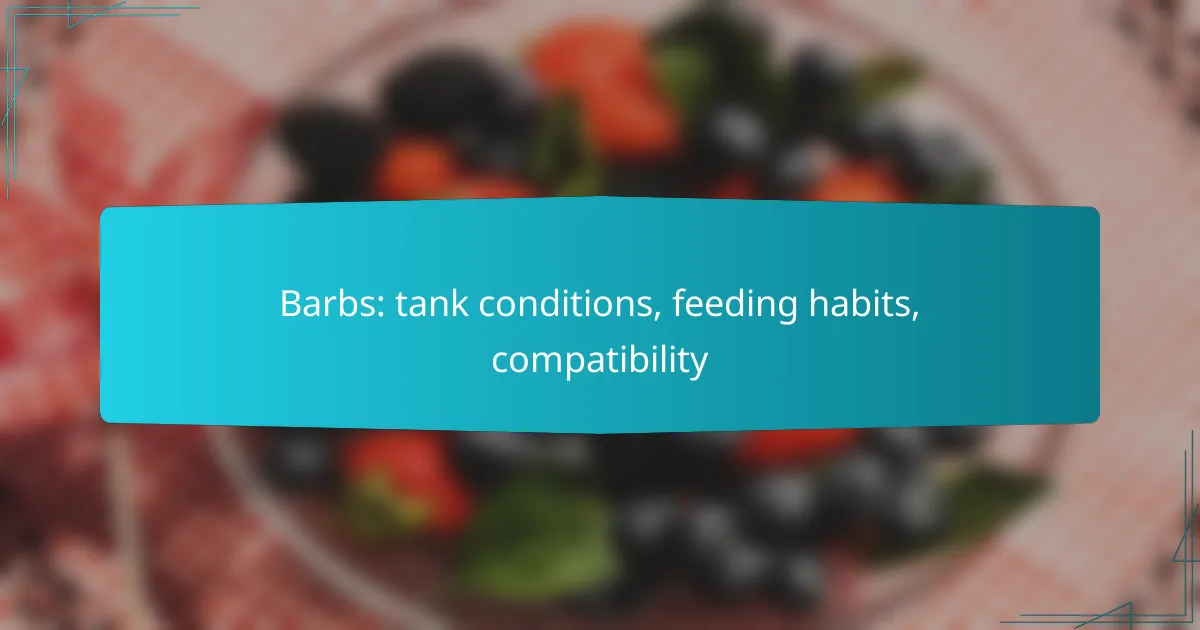Neon Tetras are vibrant freshwater fish that thrive in specific water parameters, including temperature, pH, and hardness, which are essential for their health and coloration. To create an ideal tank setup, it’s important to mimic their natural habitat with appropriate conditions, ample space, and hiding spots. Additionally, these fish are social creatures that require a minimum school of six to display their natural behaviors and reduce stress.

What are the ideal water parameters for Neon Tetras?
The ideal water parameters for Neon Tetras include specific temperature, pH level, and hardness ranges that ensure their health and well-being. Maintaining these conditions is crucial for their vibrant colors and overall vitality.
Temperature range: 22-26°C
Neon Tetras thrive in a temperature range of 22-26°C (72-79°F). Keeping the water within this range helps them remain active and stress-free. Sudden temperature fluctuations can lead to health issues, so use a reliable heater and thermometer to monitor conditions.
When setting up your aquarium, consider placing it in a stable environment away from direct sunlight or drafts, which can affect water temperature. Regularly check the temperature to ensure it stays within the ideal range.
pH level: 6.0-7.0
The optimal pH level for Neon Tetras is between 6.0 and 7.0. This slightly acidic to neutral range mimics their natural habitat in the Amazon basin. Regular testing of the water with a reliable pH kit is essential to maintain these levels.
Avoid drastic changes in pH, as they can stress the fish. If adjustments are necessary, do so gradually using appropriate pH adjusters or natural methods like driftwood, which can help lower pH levels over time.
Hardness: 2-10 dGH
Neon Tetras prefer water hardness between 2-10 dGH (degrees of general hardness). This range provides a suitable environment for their health and breeding. Soft water is generally better, as it closely resembles their native waters.
To achieve the desired hardness, consider using reverse osmosis (RO) water or mixing tap water with distilled water. Regular testing will help you maintain the right hardness levels and ensure a thriving aquarium environment for your Neon Tetras.

How to set up a tank for Neon Tetras?
To set up a tank for Neon Tetras, ensure you create an environment that mimics their natural habitat. This includes maintaining appropriate water parameters, providing sufficient space, and incorporating elements that offer shelter and security.
Tank size: minimum 10 gallons
A minimum tank size of 10 gallons is essential for keeping Neon Tetras. This size allows for stable water conditions and provides enough swimming space for a small school of these fish. Larger tanks are preferable as they help dilute waste and reduce stress.
When choosing a tank, consider the number of Neon Tetras you plan to keep. A good rule of thumb is to allow at least 2 gallons per fish, which helps maintain water quality and promotes healthy behavior.
Substrate: fine gravel or sand
For Neon Tetras, a substrate of fine gravel or sand is ideal. These materials are gentle on their delicate fins and allow for easy planting of live plants if you choose to include them. Avoid sharp or coarse substrates that could injure the fish.
When setting up the substrate, aim for a depth of about 1-2 inches. This depth is sufficient for planting and provides a comfortable environment for the fish to explore.
Plants: live or artificial for cover
Incorporating plants, whether live or artificial, is crucial for providing cover and reducing stress for Neon Tetras. Live plants can enhance water quality and create a more natural environment, while artificial plants offer easy maintenance.
Choose a mix of tall and short plants to create layers in the tank. This setup not only gives the fish hiding spots but also encourages natural schooling behavior. Ensure that any artificial plants are free of sharp edges to prevent injuries.

What are the schooling needs of Neon Tetras?
Neon Tetras thrive in schools, requiring a minimum group size to exhibit their natural behaviors. Keeping them in groups of at least six individuals promotes their well-being and reduces stress.
Minimum group size: six individuals
To ensure Neon Tetras feel secure and display their vibrant colors, they should be kept in groups of at least six. This number allows them to establish social hierarchies and engage in natural schooling behavior. A smaller group may lead to stress and shyness, affecting their health and activity levels.
When setting up a tank, consider that a larger school can enhance the visual appeal and dynamic movement within the aquarium. Aim for a tank size of at least 10 gallons to comfortably accommodate six or more Neon Tetras.
Social behavior: peaceful and active
Neon Tetras are known for their peaceful nature, making them ideal for community tanks. They are active swimmers that enjoy exploring their environment, often darting around the tank in schools. Their social behavior is characterized by a tendency to stay close to their group, which helps them feel safe.
While they are generally non-aggressive, it’s important to avoid housing them with larger, more aggressive fish that may intimidate or harm them. Suitable tank mates include other small, peaceful species like guppies or rasboras, ensuring a harmonious community.

What are the best tank mates for Neon Tetras?
Neon Tetras thrive in community tanks with peaceful companions. Ideal tank mates include smaller, non-aggressive species that share similar water parameter needs.
Compatible species: Corydoras, Guppies
Corydoras catfish are excellent companions for Neon Tetras due to their peaceful nature and bottom-dwelling habits. They help keep the substrate clean and prefer similar water conditions, making them a harmonious addition.
Guppies are another compatible species, known for their vibrant colors and friendly demeanor. They adapt well to the same water parameters as Neon Tetras and can add lively movement to the tank.
Incompatible species: larger aggressive fish
Larger aggressive fish, such as cichlids or certain barbs, are unsuitable tank mates for Neon Tetras. These fish can intimidate or harm the smaller tetras, leading to stress or injury.
When selecting tank mates, avoid species known for territorial behavior or aggressive feeding habits. Keeping a peaceful community is essential for the well-being of Neon Tetras, ensuring they feel secure and thrive in their environment.
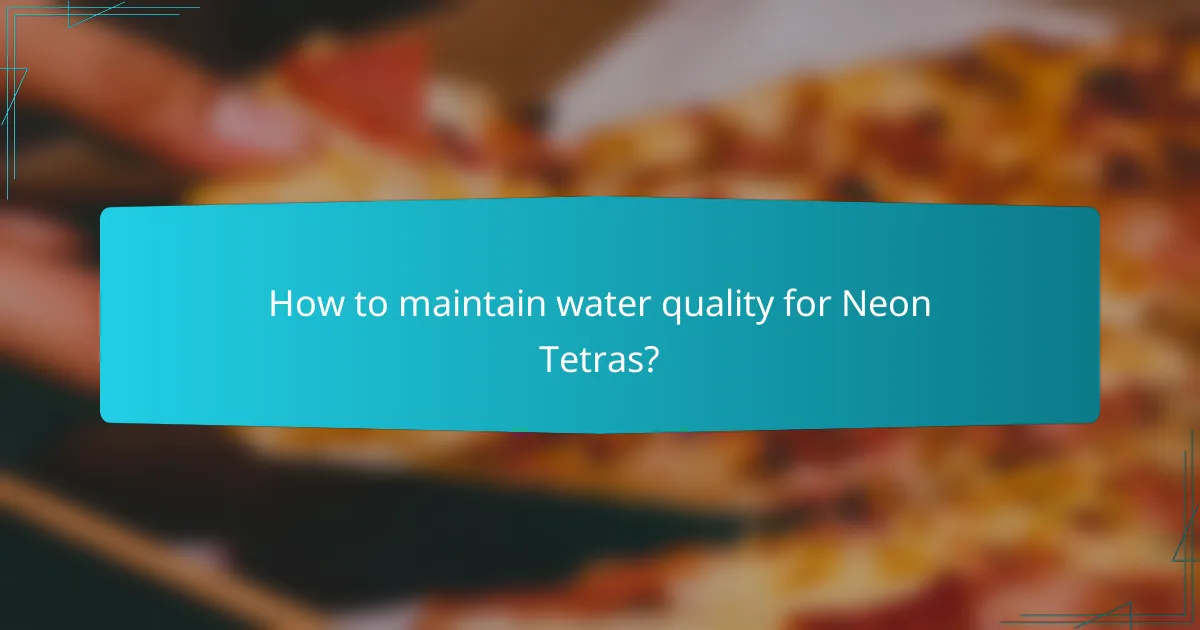
How to maintain water quality for Neon Tetras?
Maintaining water quality for Neon Tetras involves regular monitoring and management of key parameters such as temperature, pH, and ammonia levels. Consistent care ensures a healthy environment for these vibrant fish, promoting their well-being and longevity.
Regular water changes: 25% weekly
Performing regular water changes is crucial for keeping the tank environment stable and free of toxins. A weekly change of about 25% helps dilute harmful substances like ammonia and nitrates that accumulate over time.
To implement this, prepare fresh water that matches the tank’s temperature and pH. Use a dechlorinator to remove harmful chemicals from tap water before adding it to the tank.
Filtration: quality filter for clarity
A quality filter is essential for maintaining clear water and a healthy habitat for Neon Tetras. Choose a filter that provides adequate mechanical and biological filtration to remove debris and break down harmful waste products.
Consider filters rated for tanks slightly larger than your actual tank size to ensure efficient water circulation. Regularly clean or replace filter media as needed to maintain optimal performance.

What are common health issues for Neon Tetras?
Neon Tetras are prone to several health issues that can impact their well-being. Understanding these common problems is essential for maintaining a healthy aquarium environment.
Ich (white spot disease)
Ich, or white spot disease, is a prevalent parasitic infection affecting Neon Tetras. It manifests as small white cysts on the fish’s body and fins, often causing scratching against objects in the tank.
To treat Ich, raise the water temperature gradually to around 28°C (82°F) and add a suitable medication, following the manufacturer’s instructions. Ensure that the tank is well-aerated, as higher temperatures can reduce oxygen levels.
Preventing Ich involves maintaining stable water parameters and avoiding stressors such as overcrowding or sudden temperature changes. Regularly check water quality and quarantine new fish before introducing them to the main tank.





